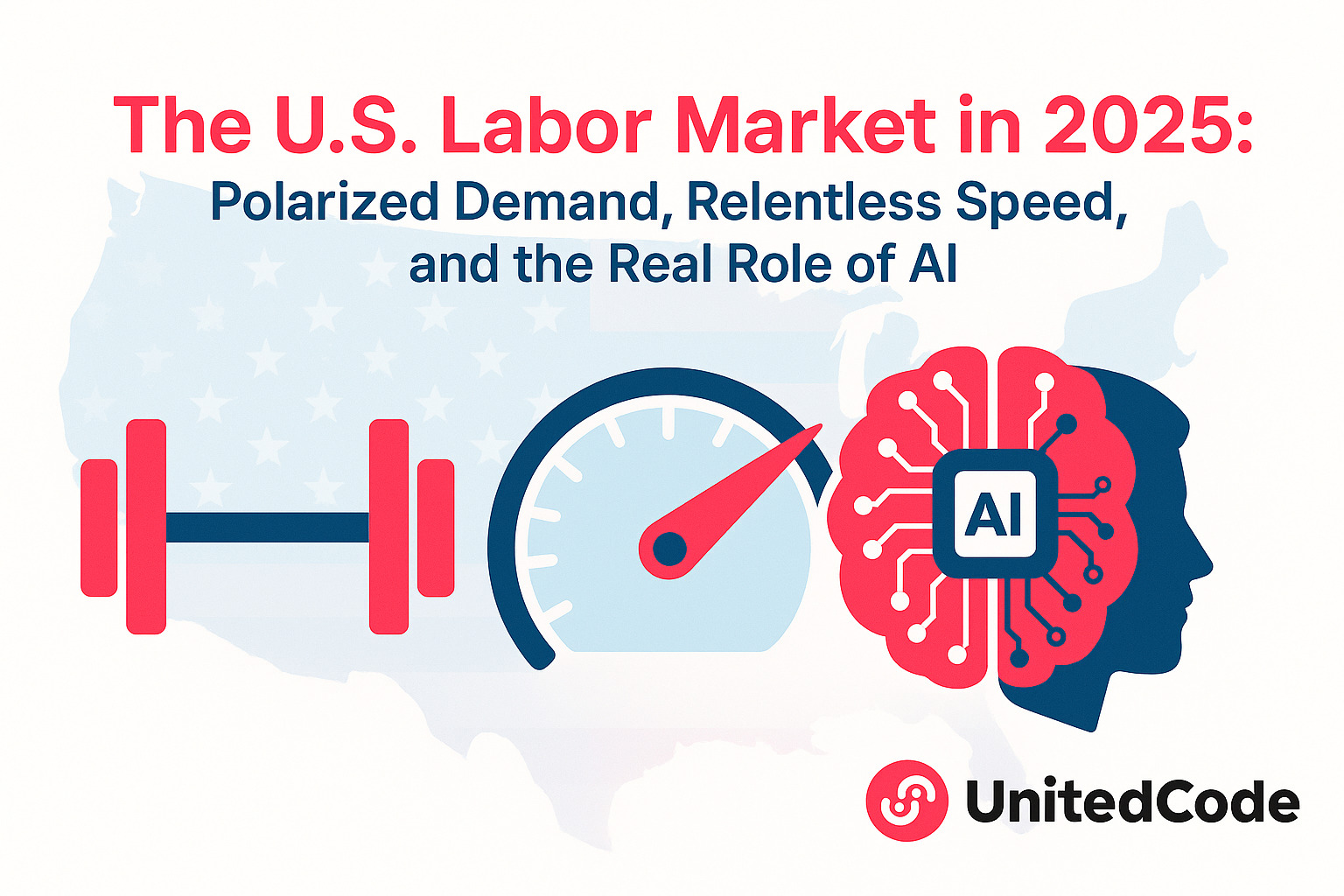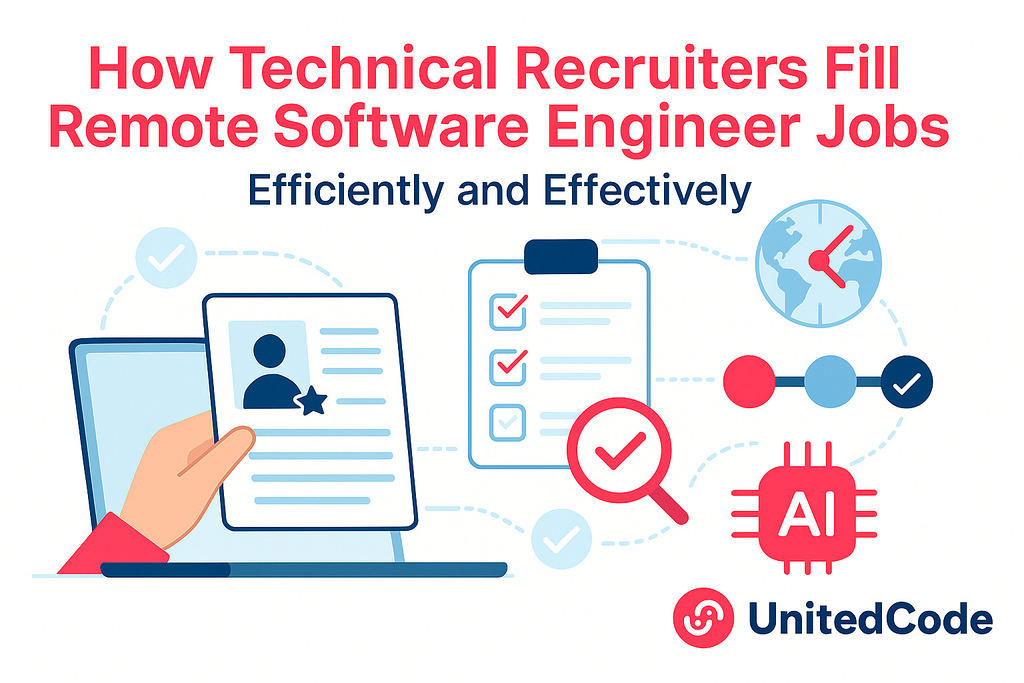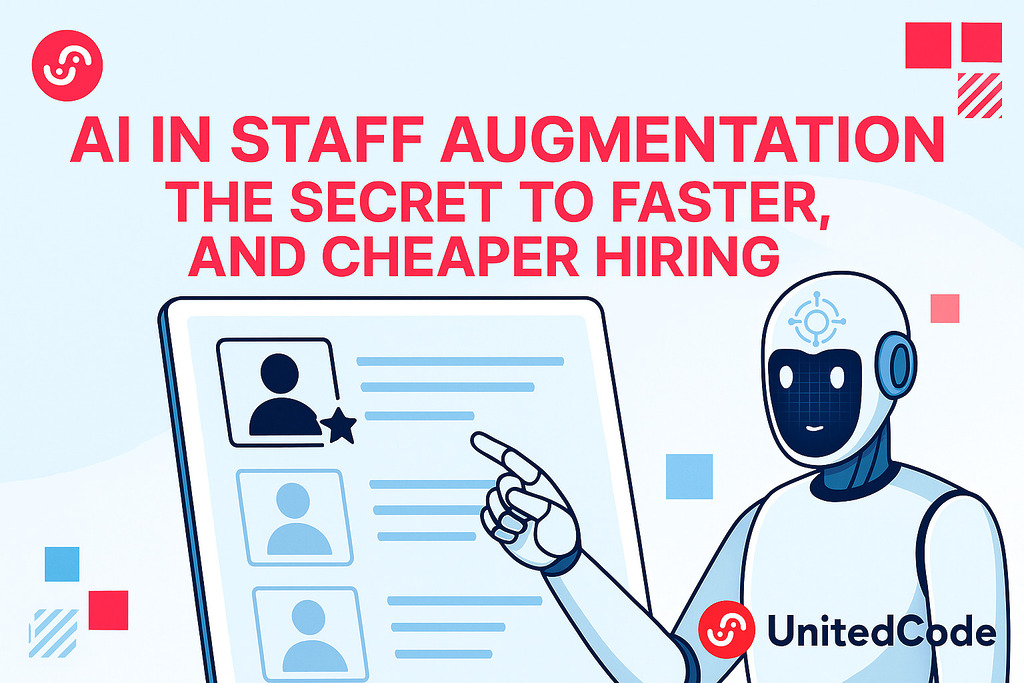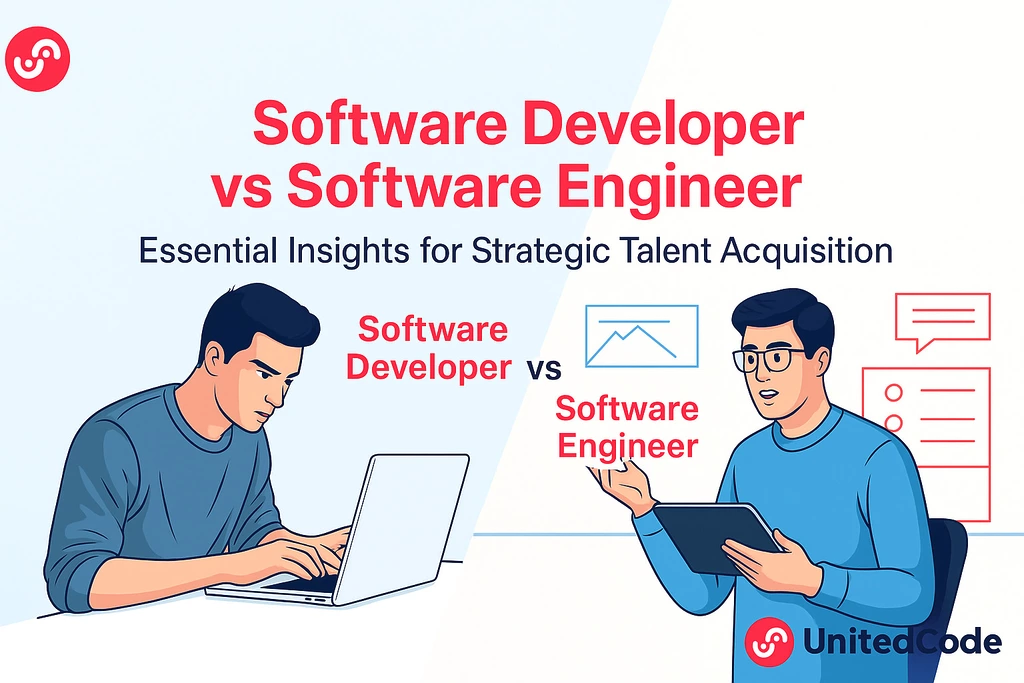The U.S. economy looks steady at first glance, yet the labor market underneath is fragmenting. In tech, especially, demand has shifted from “more heads” to “fewer, sharper minds.” That pivot is changing how companies hire for information technology jobs, and the Fed’s recent signaling reflects exactly that nuance, with headline unemployment masking pockets of weakness and supply frictions.
See below the analysis and the charts showing falling labor‑force participation in immigrant‑reliant states and “Uneven Wage Gains”.
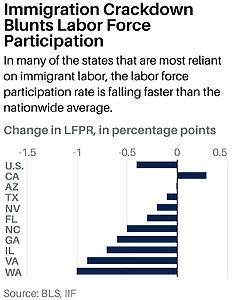
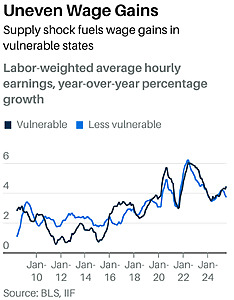
For you, the implication is concrete: requisitions for information technology jobs increasingly demand depth over breadth, while burst needs get handled via staff augmentation to keep fixed payroll lean. At the same time, shareholders and users expect faster automation and visible innovation from companies (especially product companies). There is less time for training and less tolerance for mistakes. Private-sector indicators suggest a cooling: ADP data report job losses, ISM Services employment remains in contraction, and bank data show rising unemployment payments, even as markets anticipate additional rate cuts.
Beneath headline stability, the U.S. labor market is uneven in terms of function and region. Openings have cooled from 2022 peaks but remain elevated relative to pre‑pandemic levels, based on Job Openings and Labor Turnover Survey, BLS, while quits have normalized and hiring has slowed. ISM PMI surveysindicate that service activity is expanding, while manufacturing activity fluctuates around contraction/expansion thresholds, signaling mixed demand – precisely the backdrop where precision hiring matters most.
For technology, the implications are specific: payroll data point to steady but moderating job gains with cooling wage growth (ADP National Employment Report), and productivity has improved as firms adopt automation (BLS productivity). Leaders are still shipping roadmaps, but they are doing it with fewer requisitions and tighter scopes—prioritizing senior specialists who can move critical systems without long ramp‑up windows.
What does the economy mean for your next technical hire?
- Fragmentation behind a tidy headline.Identical unemployment rates can now signify very different realities, depending on whether tightness is driven by weak supply or strong demand; the Fed is monitoring participation and localized wage pressure, not just the top-line rate. That helps explain why you see shortages in some roles and surpluses in others.
- Risk is up, patience is down.Consumers expect more job losses and higher inflation; hiring plans reflect caution. Meanwhile, investors remain patient with AI spending, lifting tech indexes and encouraging companies to keep building—but with cost discipline.
What to do: Narrow your information technology jobs to specialized, outcome‑critical capabilities. Use staff augmentation for uncertainty, experiments, and delivery spikes; reserve FTE budget for systems your business must own long‑term.
Demand is growing only for experts

Vacancies are up where one senior specialist can compress months of work into weeks, such as in AI/ML architecture, cloud security, data platform stewardship, and cost optimization. Recent salary guides forecast premium pay for Big Data or AI-adjacent roles and specialist architects, validating that narrow expertise commands pricing power even as broad hiring slows.
This shift reframes the overall approach to requests for information technology jobs. Vague lists of tools won’t suffice anymore; now the request is for problem statements, clear skill sets, direct industry experience, and the business constraints the hire must navigate.
Bottom line: Broad hiring waves have given way to surgical searches. If a role cannot compress delivery risk or unlock revenue, it stalls; if it can, senior experts clear instantly. For most teams, the practical path is targeted staff augmentation—temporary, high-impact specialists who plug into your stack, prove their value quickly, and keep fixed headcount lean.
Done right, staff augmentation becomes an accelerator – not a compromise, because you specify outcomes, not just hours, while your core team retains architectural ownership. And of course, you reduce the risk of a bad hire by testing developers in real life before hiring them as an FTE.
In the current switching labor market, with a deep focus on talent, this could be a solution. Why? – Because it allows developers to prove themselves to find their dream job, and for companies to reduce the risk of a wrong hire.
Why training windows vanished (and error costs soared)?
Global instability and tariff frictions compel companies to deliver more with less, while reducing production and support costs. There’s little budget for lengthy ramp‑ups; the cost of a bad decision in fintech, healthcare, or AI‑driven experiences is now regulatory, reputational, and model risk all at once.
That’s why requisitions for information technology jobsincreasingly ask for “day‑one impact,” and why staff augmentationremains attractive when you must move immediately. This is also why rigorous vetting – not volume has become your real moat.
Everything is accelerated—and stressed (did AI help or delay a more brutal snap?)
Now, the company’s roadmap is a loop: analyze→ship→measure→cut cost →repeat. The spring feels over‑compressed. Did AI release pressure, or just defer it?
- Helped:AI tooling enabled one senior software engineer to do the work of several—faster tests, safer rollouts, and better observability. Markets are still underwriting that thesis.
- Perhaps delayed: Private reports indicate cooling demand and rising job-lossanxiety. If efficiency gains outpace new demand, the reckoning isn’t gone—only postponed.
Pragmatically, companies need fewer information technology jobs and more specialized ones; then they can use staff augmentation to surge for migrations, audits, or AI retrofits without incurring additional fixed costs.

- The perceived probability of losing one’s job in the next year rose 0.4 percentage points to 14.9%, according to the NY Fed survey. Unsurprisingly, consumers reported aiming to be more frugal, with median spending growth estimates dropping 0.3 percentage points to 4.7%, below the 4.9% trailing 12-month average.
- “Labor market expectations continued to deteriorate with consumers reporting lower expected earnings growth, greater likelihoods of losing jobs, and a higher likelihood of a rise in overall unemployment,” the report says.
AI has lifted throughput where judgment already existed. In teams with a strong engineering discipline, characterized by clear interfaces, tests, and observability, AI accelerates code creation, review, and maintenance. In weaker systems, it amplifies noise. That helps explain why aggregate output per hour has risen even as hiring slows (according to the BLS productivity data).
At the same time, macro indicators do not indicate a broad collapse in technology employment; instead, they show a reallocation. Roles that pair systems thinking with accountability, such as architecture, data platforms, reliability, and governance, remain essential. Entry-level, task-only roles bear the brunt of substitution as tools handle boilerplate and scaffolding.
Practically, the distinction between “software engineer vs. software developer” becomes sharper in the AI era: developers focus on feature velocity with AI assistance, while engineers design the guardrails – data flow, model risk, and cost control – that keep products safe at scale. Companies hiring against this reality avoid costly rewrites and outages.
AI and engineers: companion, not replacement (who actually lost work?)

Despite headline fears, AI has mostly become a companionfor high‑leverage engineers. The roles that eroded fastest were:
- “Just coding” roleswith minimal ownership—if you can keep one top performer and equip them with automation, you will.
- Basic site/app assemblyon Shopify, WordPress, and similar platforms: today, this is block-based composition, not complex engineering. AI‑assisted builders and non‑developers can now ship credible MVPs.
What remains vital are roles that carry judgment and trade‑off literacy. That reality should shape both how responsible-for-hire officers scope information technology jobs and how they engage staff augmentation partners: prioritize system design, data governance, AI/ML ops, safety, cost curves, and operability over raw lines of code.
Today, AI enhances the productivity of each principal software engineer across the entire software development lifecycle: it generates boilerplate code and unit tests, suggests safe refactorings, and explains unfamiliar code paths, allowing context to ramp up faster. In reviews, AI flags insecure patterns, race conditions, and missing edge cases; in operations, it summarizes logs, correlates metrics, and suggests rollback points during incidents. For platform work, assistants generate Terraform/Kubernetes manifests, convert legacy services to modern frameworks, and create migration plans with step-by-step checks. On the data side, AI validates schemas, catches PII leaks, and sketches baseline feature stores. Even non-functional work benefits: AI estimates cloud cost impact of design options, recommends caching or query plans, and produces first-draft docs and runbooks. Net effect: fewer busywork hours, more time for architecture, governance, and reliability.
The software engineer resume is broken – here’s how to read (and fix) it
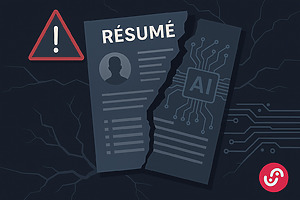
The problem with today’s software engineer resume:
Most resumes don’t help separate signal from noise. They list tools, not outcomes; responsibilities, not decisions; and they rarely document the scale that determines whether someone can ship safely in your environment. In a world where AI can generate bullet points, the average software engineer’s resume has become a poor proxy for real‑world capability. That’s dangerous when you have no time for training and the cost of error is rising.
Common failure modes we see in software engineer resumereviews:
- Keyword soup:long stacks with no proof of depth, no trade‑offs, no constraints.
- No scale context:“built a service” without traffic, latency, or SLOs.
- Invisible, real hard-skill experience:a vast array of technologies and their interrelationships obscures developers’ core technical skills and responsibilities.
Lack of data about industry experience: general workflow instead of solving industry-related tech tasks.
UnitedCode’s new resume format: evidence beats adjectives
UnitedCode transforms a software engineer resume into verified, structured skill data, enabling teams to match the right engineer with the proper role with 98% vetting accuracy. Thanks to the implementation of ML and applied data analytics, UnitedCode’s resume format visually organizes and highlights the most critical information for hiring managers. The outcome: faster shortlists and fewer interviews per hire because the resume already answers the hard questions.
Helping developers highlight their fundamental hard skills and achievements, our format resume design helps companies hire faster and safer:
- Intuitive visual profiles: a clean, scannable snapshot that surfaces what matters most: core strengths, grouped tech skills, domains, and impact at a glance.
- Real-world experience: Our AI analyzes the actual work delivered (not titles or buzzwords) to reveal the technical depth and scope of ownership.
- Accurate skill analysis: every claimed skill is thoroughly tested and validated to build confidence in day-one capabilities.
- Outcome Cards: one-page summaries tying a developer’s career achievements to measurable business results.
As a result, you get not just a classic resume, but an analytical summary:
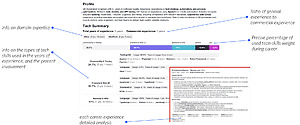
This format turns a software engineer’s resume into a decision document. It’s how we ensure that when you open any request for information technology jobs, you see the real outcome: What this person will achieve when they join, not just what they’ve touched in the past.
How UnitedCode reduces hiring risk (real mechanics)
UnitedCode specializes in vetting and sourcing top developers. Our bias is toward vetting:
- Global sourcing coverage (25 countries):Each market is thoroughly assessed for culture, taxation, tech talent depth, regulatory restrictions, and more.
- We uncover each developer’s true technical depth: our AI evaluates real experience, not just job titles or buzzwords.
- Intuitive visual profiles and a unique methodology: quickly help you effectively assess a developer’s experience with a readable layout and point out inconsistencies
- Scenario‑based technical interviewsmapped to your architecture (not generic puzzles).
- Structured reference callswith prompts about trade‑offs, maintainability, and incident response.
Whether you’re filling strategic information technology jobsor spinning up a staff augmentationpod for a migration sprint, our process protects your roadmap from false positives.
UnitedCode stays ahead by pairing layered human screening with AI-driven analysis. We evaluate each candidate holistically, considering technical depth, motivation, identity verification to weed out fake profiles, and cultural alignment. Instead of the legacy practice where agencies “pass along” developers, doubling prices through markups, we operate on clear, direct relationships. Clients work directly with rigorously vetted engineers, ensuring honest rates and true commitment.
Final Word
The 2025 U.S. labor market rewards precision. Headline stability masks a polarized reality: broad requisitions move slowly, while searches for high-leverage experts close fast. AI has lifted productivity but also raised the bar on judgment, security, and systems thinking. In this climate, hiring for “any developer” is inefficient; hiring for proven impact—on reliability, data quality, or cost curves—is where returns compound. Teams that adapt their talent acquisition to this pattern will ship more with fewer roles and avoid costly rewrites.
For most organizations, the practical path is selective staff augmentation backed by evidence-based vetting. A curated shortlist of specialists—screened on real outputs, version-level depth, and domain context—cuts interview load and time-to-value. Combine that with time-zone alignment, clear objectives, and transparent pricing, and you replace capacity gaps with measurable momentum. The goal isn’t to add seats; it’s to add capability that shows up in SLOs, incident trends, and product velocity.
UnitedCode is built for this moment. Our hybrid AI-plus-human process verifies real experience, our unique resume format exposes trade-offs and outcomes, and our flat-fee transparency builds trust. With proactive sourcing across 25 countries and U.S. collaboration windows, we minimize hiring risk and expedite execution where it matters. If your roadmap demands fewer interviews per hire, faster impact, and engineers matched to the exact constraints of your stack, we’d be glad to deliver the shortlist – so you can ship with confidence.
Prepared and written by Dan Bohatyrchuk, Founder and CEO of UnitedCode, Seasoned Entrepreneur, Product Engineering Manager, Fractional CTO, and Startup Advisor with 20+ years of experience
Frequently Asked Questions
Q1. Which information technology jobs are most defensible right now?
Roles anchored in judgment and systems thinking – AI/ML architecture, data platforms, site reliability/observability, security, and cloud platform engineering – remain resilient. They combine scarce expertise with clear business impact, focusing on uptime, latency, data quality, and cost control. Specialists who can reason about trade-offs (performance vs. spend), implement guardrails, and modernize pipelines are prioritized even as broader hiring cools. Entry-level, task-only roles feel the pressure; high-leverage engineers who prevent outages or accelerate launches continue to command demand.
Q2. Can staff augmentation keep quality high?
Yes – if it’s managed as outcome-driven capacity, not headcount filler. Define measurable objectives (SLO improvements, feature throughput, cloud cost targets) and integrate dedicated developers into your rituals: code reviews, incident postmortems, and sprint demos. Utilize evidence-based software developers vetting to ensure day-one capability and ensure time-zone alignment for effective collaboration. The right partner, like UnitedCode, will present a curated shortlist, transparent pricing, and ongoing performance checks, so flexibility doesn’t mean compromise, and quality trends upward across sprints.
Q3. How does a UnitedCode software engineer’s resume differ from a standard CV?
It’s a decision-ready profile grounded in proof. This is a radically innovative approach to vetting software developers, as you get not just a classic resume, but an analytical summary. You see architecture choices, versions, constraints, and ownership – not generic adjectives. Paired with structured interviews and reference prompts about trade-offs and operability, it reduces false positives and shortens interview loops, helping you select engineers who can contribute immediately to your stack and roadmap.
Q4. Will AI replace my dev team?
Unlikely. AI compounds the impact of strong engineers by accelerating boilerplate, tests, and refactors, but it doesn’t replace system design, governance, or product judgment. The roles most at risk are those with task-only functions and little ownership. Teams that benefit most from AI have clear interfaces, tests, and observability; they use AI to increase throughput while humans make architectural and security decisions. Think of AI as a force multiplier – valuable, but only in the hands of capable engineers.
Q5. How do I choose between a software developer and a software engineer for a role?
Match the role to the problem. If you need feature velocity within an established architecture – UI flows, APIs, integrations – hire a developer with the relevant stack expertise. If the challenge is systemic, such as scalability, data modeling, multi-service reliability, or cost governance, you need an engineer who designs guardrails and aligns the platform with business goals. In practice, many teams blend both approaches: an engineer sets patterns and reviews cross-service work, while developers implement features efficiently within those boundaries. During the five-step selection process, UnitedCode conducts an in-depth analysisof the candidate’s entire work experience, helping you find the right developer or engineer to meet your current needs.
